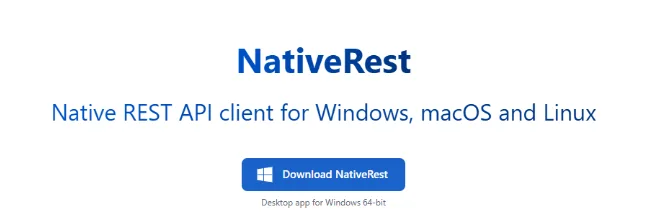Launching a Telehealth App in 2025
Telehealth has shifted from being an emergency response during the pandemic to an essential component of modern healthcare. By 2025, the global telehealth market is projected to surpass $150 billion, with virtual visits expected to account for nearly a third of all medical consultations in certain regions. Patients are increasingly comfortable receiving care remotely, insurers are expanding reimbursement, and regulators are creating frameworks that support digital-first healthcare delivery. At the same time, advances in artificial intelligence and wearable devices are enriching telehealth beyond basic video calls.
A telehealth app can be thought of as a virtual clinic in your pocket. At its core, it connects patients and doctors through secure video or chat. But in 2025, these apps are far more sophisticated: they include features such as e-prescriptions, integration with connected medical devices, automated reminders, and even AI-powered symptom checkers. Building such a solution requires careful planning, not only in technology but also in compliance, design, and business strategy.
Step 1: Define the Purpose and Use Cases
The first step in telehealth app development is clarifying why your app should exist and whom it will serve. Telehealth is not a single product but a broad category that spans many medical needs. For instance, a platform designed for urgent care consultations will look very different from an app that helps diabetes patients track their vitals.
General consultation platforms are often positioned as all-purpose solutions, providing patients with on-demand access to primary care. Mental health apps, on the other hand, must prioritize privacy and ease of scheduling recurring sessions. Chronic disease management apps rely heavily on integrations with medical devices such as blood pressure monitors or glucose sensors, while telepharmacy platforms revolve around e-prescriptions and pharmacy delivery services. There are also niche telemedicine services, such as dermatology apps that use high-resolution imaging or oncology apps that enable remote tumor board consultations.
Your chosen business model will shape the feature set as much as the medical focus. Direct-to-consumer apps typically emphasize simple onboarding, ratings, and payment processing, while clinic-focused platforms require multi-user support, audit trails, and interoperability with hospital systems. If you plan to monetize through subscriptions, you will need billing and tier management. A pay-per-visit model, by contrast, demands seamless card payments and insurance verification.
Step 2: Must-Have Features in 2025
Once your use case is clear, the next step is identifying the features your app needs. By 2025, high-quality video and audio consultations are a given. Patients expect the same clarity and reliability they get from consumer video apps, but with healthcare-grade security. Appointment scheduling has also become a baseline expectation, with automated reminders reducing no-shows and calendar integrations making it easy for both doctors and patients to stay organized.
Electronic prescriptions are another standard, with patients assuming that their medication can be sent directly to their preferred pharmacy. More advanced telehealth apps now integrate AI-powered chatbots that guide patients through symptom reporting before a consultation. Remote monitoring has also moved into the mainstream, enabling doctors to track vital signs from wearables and connected devices. Add to this the necessity of secure payment and insurance workflows, role-based dashboards for providers and patients, multilingual support, and compliance with HIPAA and GDPR, and you have the skeleton of a modern telehealth app.
To better distinguish priorities, it helps to think of features in two groups. Core features are those that every viable app must include: video calls, scheduling, secure messaging, prescriptions, and payments. Advanced features are what can help your app stand out: predictive analytics dashboards, real-time translation, or integration with IoT medical devices.
Core vs. Advanced Features in Telehealth (2025)
| Core Features | Advanced Features |
| HD video & audio consultations | AI-powered triage and chatbots |
| Appointment scheduling & reminders | Predictive patient analytics |
| Secure messaging & e-prescriptions | Remote patient monitoring with IoT |
| Payment & insurance integration | Multilingual real-time translation |
| HIPAA/GDPR-compliant security | Accessibility enhancements like voice commands |
Step 3: Choosing the Technology Stack
Behind every smooth patient experience is a robust technology stack. On the frontend, many startups rely on React Native or Flutter to build cross-platform apps, while enterprise projects sometimes opt for native Swift or Kotlin for maximum control. On the backend, Node.js is popular for its real-time capabilities, Python/Django offers strong security and integration with AI, and .NET or Java provide enterprise-grade scalability.
Databases are another critical choice. Structured health records fit well into PostgreSQL, while unstructured data such as chat logs or wearable readings often go into MongoDB. Many apps also rely on Redis for real-time updates and use cloud object storage like AWS S3 for images or medical files.
Finally, few telehealth apps are built without third-party APIs. Video consultations are typically powered by Twilio or Agora, payments by Stripe or PayPal, and interoperability with hospitals achieved through FHIR/HL7 APIs. Choosing vendors that offer HIPAA-compliant agreements is non-negotiable.
Step 4: Compliance and Security
Telehealth development lives under the shadow of regulation. In the U.S., HIPAA sets the gold standard for protecting patient information. In the EU, GDPR requires explicit consent and careful handling of data across borders. In Israel, the Ministry of Health has its own telemedicine standards, ensuring that remote consultations meet the same quality and recordkeeping requirements as in-person visits.
From a technical standpoint, security means encrypting all data in transit and at rest, enforcing strict access controls, and maintaining audit trails of who accessed what information. Multi-factor authentication, automatic logouts, and regular penetration testing are essential. A healthcare app that fails at security risks not only fines but also the trust of patients and providers.
Step 5: Designing for UX and Accessibility
In healthcare, design is not cosmetic — it directly affects adoption. Patients, especially those who may be anxious, elderly, or unwell, need an app that feels simple and reassuring. That means large, legible fonts, clear buttons, and easy navigation. Features like dark mode, voice commands, and captioning help broaden accessibility.
Doctors, too, benefit from thoughtful design. A provider dashboard that displays patient history, vitals, and prescription options alongside the video feed reduces friction and saves time. Telehealth should not add to the workload of busy clinicians but streamline it. The best apps are those where technology becomes invisible and the focus remains on the patient-doctor interaction.
Step 6: Development Approaches
There are several ways to build a telehealth app. Some companies choose to assemble in-house teams, which provides more control but also requires significant investment in recruiting specialized developers. Others partner with an eHealth software development company, gaining immediate access to experienced engineers and compliance experts. A hybrid model — keeping a small core team in-house while outsourcing development — often balances speed with oversight.
No matter the approach, starting with an MVP (Minimum Viable Product) is recommended. An MVP with scheduling, video calls, and prescriptions can often be delivered within 3–5 months. More complex platforms that include AI, IoT integrations, and multi-language support may take 6–12 months and budgets in the range of $150k–$300k.
Step 7: Testing and Quality Assurance
A telehealth app must undergo more rigorous testing than most consumer apps. Functional testing ensures every workflow — from booking to prescription delivery — works correctly. Usability testing with real doctors and patients can reveal unexpected friction points, while load testing helps verify that the platform can handle peak demand without crashing.
Security audits are another non-negotiable. Simulated attacks should test whether a user can access another patient’s records, whether encryption is correctly implemented, and whether sensitive data leaks under poor network conditions. In healthcare, QA is not just about preventing bugs; it’s about ensuring safety.
Step 8: Deployment and Integration
Once tested, deployment requires careful planning. Most providers rely on cloud infrastructure such as AWS, Azure, or GCP, configured for HIPAA and GDPR compliance. Continuous integration and delivery pipelines allow for regular updates, while monitoring tools help track uptime and performance.
Integration with existing healthcare systems is equally critical. Hospitals and clinics will expect your app to push and pull data from their electronic health records. Pharmacies will want prescriptions delivered in formats they already support. Success here is measured not only by the app’s standalone quality but by how seamlessly it fits into the broader healthcare ecosystem.
ROI and Business Benefits
For providers, telehealth reduces overhead, minimizes no-shows, and allows them to reach more patients without expanding physical space. For patients, convenience translates into higher satisfaction and loyalty. For startups, telehealth opens up new revenue models — from subscriptions to partnerships with insurers and pharmacies.
Studies have shown that telehealth adoption can cut operational costs by as much as 40% while creating new opportunities for growth. When executed well, telehealth is a win for both healthcare organizations and the patients they serve.
Future Outlook: Telehealth Beyond 2025
Looking ahead, telehealth will evolve from reactive care to predictive and preventive care. AI agents are already capable of triaging patients and drafting clinical notes. Wearables are supplying continuous streams of biometric data, which machine learning models can use to detect early warning signs. Emerging technologies like AR and VR may soon bring immersive rehabilitation and therapy into patients’ homes.
Telehealth in the future will not be a separate mode of care but an integrated part of every healthcare journey. Apps that are built with adaptability and interoperability in mind will be best positioned to thrive.
Building a telehealth platform in 2025 is a complex project. It requires expertise in compliance, security, AI, IoT, and UX design as well as a deep understanding of clinical workflows. Hiring a global healthcare software development company can be the best solution. Such teams can help you build HIPAA-compliant platforms, handle everything from product ideation and UX/UI design to backend architecture, integrations, and post-launch support. Whether you are a startup looking to launch an MVP or a healthcare provider expanding your digital services, such companies can tailor solutions to your needs.





